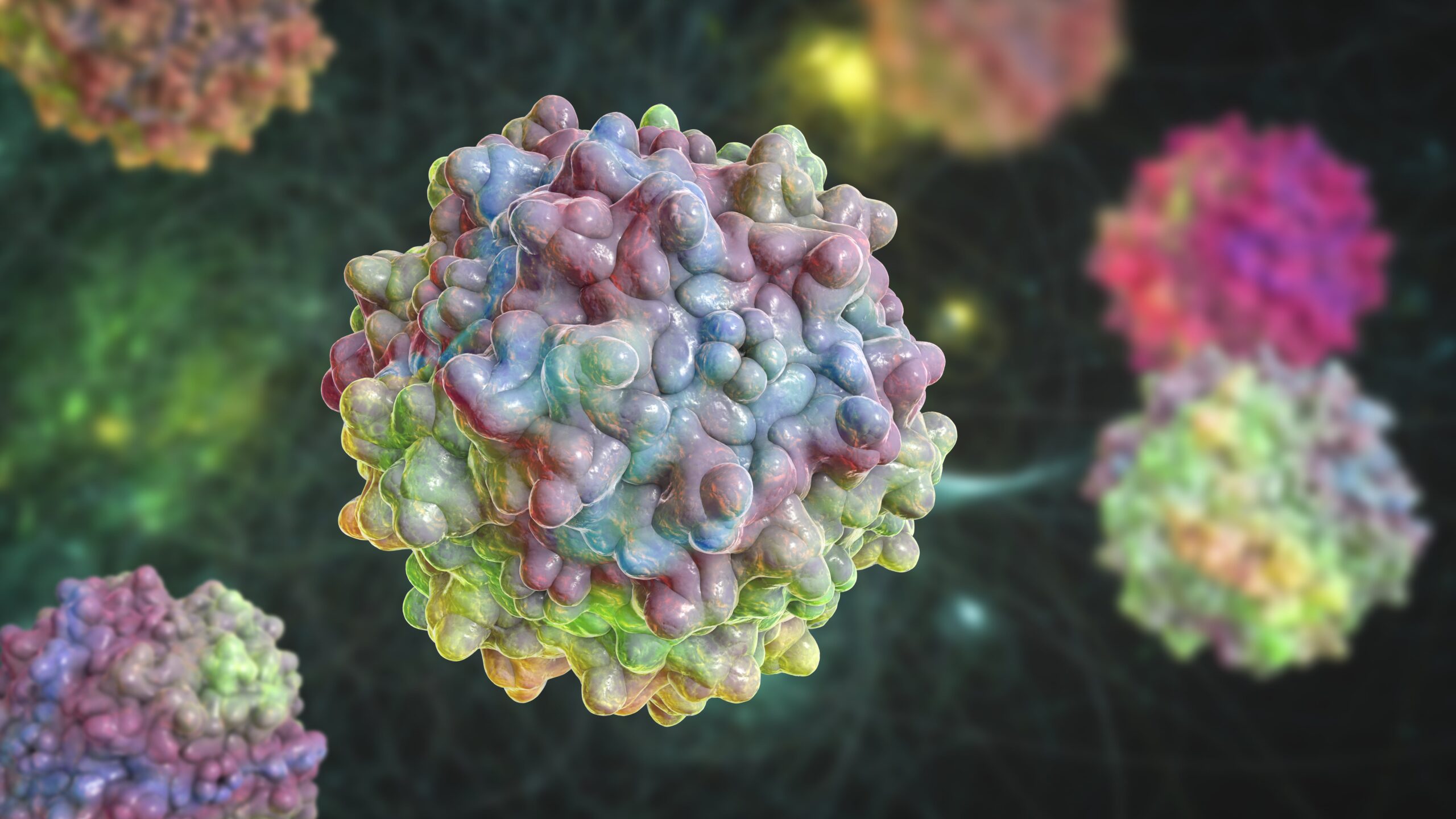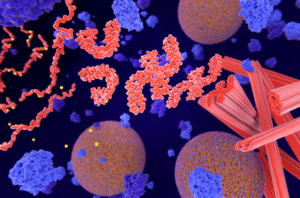Gene therapy clinical trials using adeno-associated virus (AAV) vectors for gene transfer are on the rise. AAV vectors are an appealing choice for gene therapy applications because of their strong safety profile, long-term gene expression, and high-efficiency transduction into a wide range of target tissues. Despite these advantages, there are limitations: AAV vectors have limited DNA uptake capacity and thus cannot reliably transport larger genes. But now, a team of scientists at the University of Zurich has developed a breakthrough gene therapy technology that may provide a pathway around these limitations.
Advantages of Adeno-Associated Virus Vectors in Gene Therapy
Adeno-associated virus (AAV) vectors are frequently used in gene therapy applications. AAV vectors offer a strong safety profile thanks to their low immunogenicity and lack of pathogenicity and toxicity. AAV vectors do not integrate into the human genome, which reduces the risk of insertional oncogenesis that accompanies other methods. In addition, because of their lasting transgene expression profiles and their ability to infect both dividing and non-dividing cells, AAV vectors offer the potential for efficient, effective, and long-lasting treatments.
However, AAV vectors have one serious limitation: their limited cargo capacity means they cannot transport the large genes needed to treat certain diseases or conditions.
Solving this problem has long been a hurdle for researchers. In the past, research efforts have focused on developing dual AAV vector systems, which use two separate AAV vectors to deliver a large gene, each vector carrying part of the gene in question. When both vectors infect the same cell, the two segments recombine, forming a complete and functional gene.
This approach is promising, but thus far, researchers have also encountered downsides inherent with this method: it has low to moderate reconstitution efficiency and carries with it safety concerns and the risk of side effects. Another issue is that this approach is inflexible in regard to the location at which large genes can be divided, which poses a problem for experimental designs.
A new technology could solve these problems.
REVeRT Technology
A team of researchers at the University of Zurich, led by experimental and translational ophthalmology professor Elvir Becirovic, has developed a technology that bypasses some of the limitations of AAV vectors and dual AAV vector systems. Their novel gene therapy delivery method, known as REVeRT (reconstitution via mRNA trans-splicing), is based on the principles of dual AAV vector systems. But unlike previous dual AAV vector technologies, REVeRT has several notable advantages.
REVeRT technology offers versatile split site selection and efficient reconstruction that could be applied in various in vitro and in vivo settings. As Becirovic explains, “The advantages of this method are increased efficiency and fewer side effects. It is also more flexible than previous methods, as the large genes can be divided into two fragments at various points.”
REVeRT technology may enable AAV vectors to deliver genes that are usually beyond their carrying capacity.
The improved flexibility that the REVeRT method offers includes the ability to be administered in single or multiplexed doses, and its balance of flexibility and efficiency could make it an ideal technology for both basic and clinical research applications.
Treatment Implications
Becirovic and his team developed REVeRT ophthalmologic applications. The eye is considered one of the most promising targets for gene therapy thanks to its size, immune-privileged status, and ease of access.
However, REVeRT’s potential applications extend beyond treating corneal or retinal diseases. REVeRT technology could be used for many inherited and acquired diseases, ranging from blood disorders to conditions associated with aging. The potential applications of using REVeRT technology along with CRISPR/Cas gene editing technologies are of particular interest to researchers. The team hopes that REVeRT technology may make more efficient and more effective gene therapy treatment for a wide range of conditions possible.
Scantox is a part of Scantox, a GLP/GCP-compliant contract research organization (CRO) delivering the highest grade of Discovery, Regulatory Toxicology and CMC/Analytical services since 1977. Scantox focuses on preclinical studies related to central nervous system (CNS) diseases, rare diseases, and mental disorders. With highly predictive disease models available on site and unparalleled preclinical experience, Scantox can handle most CNS drug development needs for biopharmaceutical companies of all sizes. For more information about Scantox, visit www.scantox.com.









